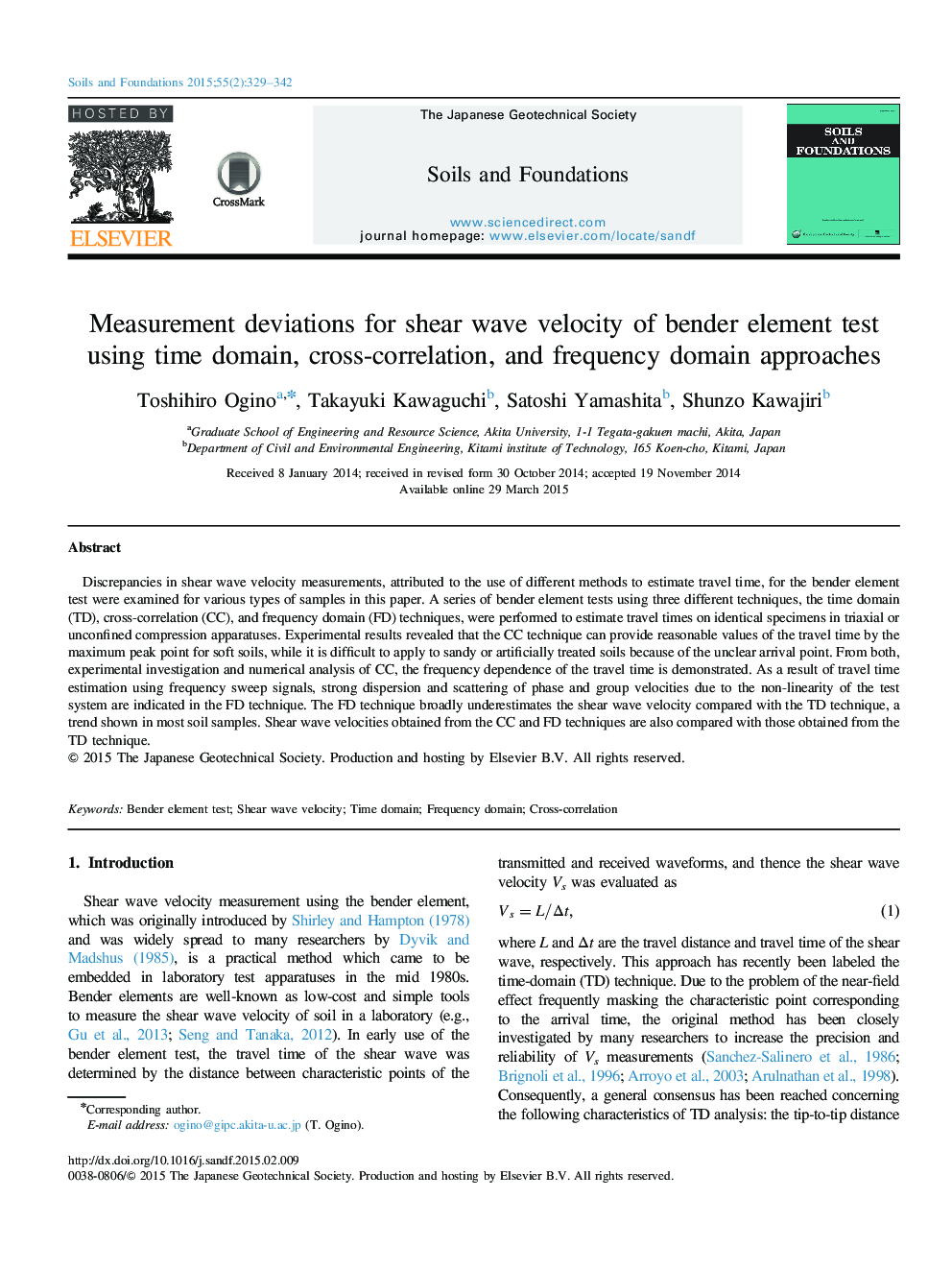| Article ID | Journal | Published Year | Pages | File Type |
|---|---|---|---|---|
| 307012 | Soils and Foundations | 2015 | 14 Pages |
Discrepancies in shear wave velocity measurements, attributed to the use of different methods to estimate travel time, for the bender element test were examined for various types of samples in this paper. A series of bender element tests using three different techniques, the time domain (TD), cross-correlation (CC), and frequency domain (FD) techniques, were performed to estimate travel times on identical specimens in triaxial or unconfined compression apparatuses. Experimental results revealed that the CC technique can provide reasonable values of the travel time by the maximum peak point for soft soils, while it is difficult to apply to sandy or artificially treated soils because of the unclear arrival point. From both, experimental investigation and numerical analysis of CC, the frequency dependence of the travel time is demonstrated. As a result of travel time estimation using frequency sweep signals, strong dispersion and scattering of phase and group velocities due to the non-linearity of the test system are indicated in the FD technique. The FD technique broadly underestimates the shear wave velocity compared with the TD technique, a trend shown in most soil samples. Shear wave velocities obtained from the CC and FD techniques are also compared with those obtained from the TD technique.
